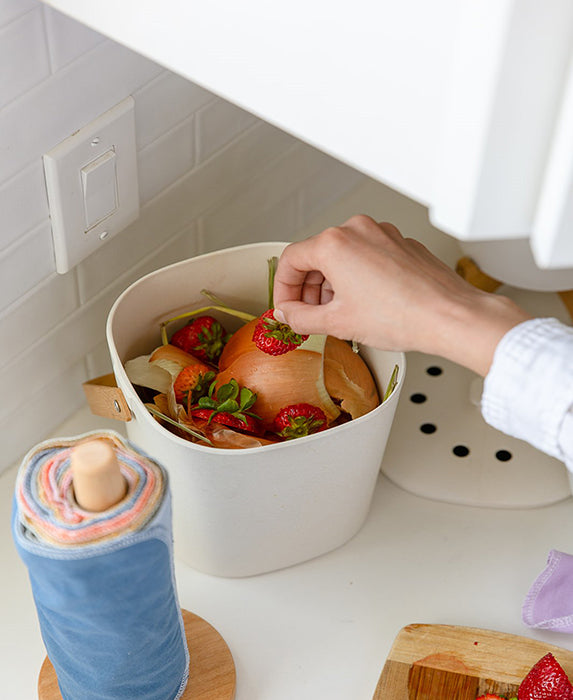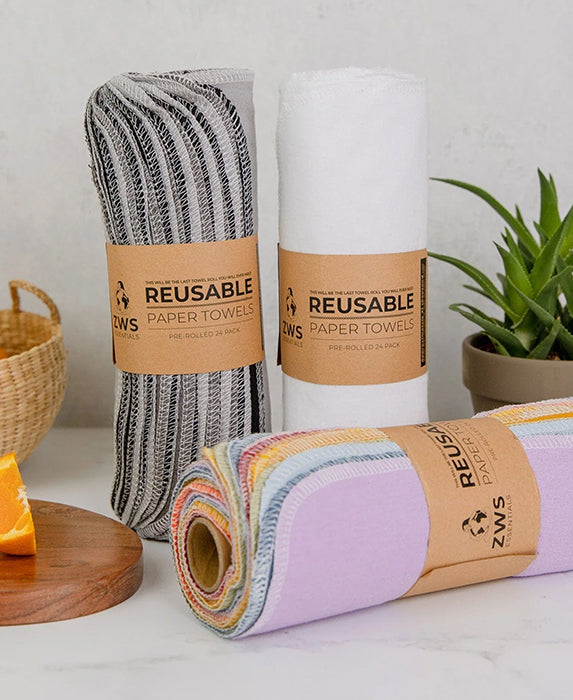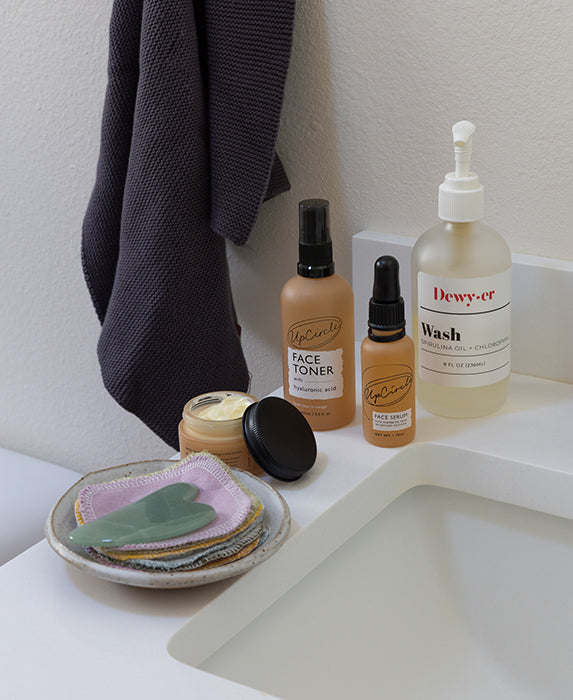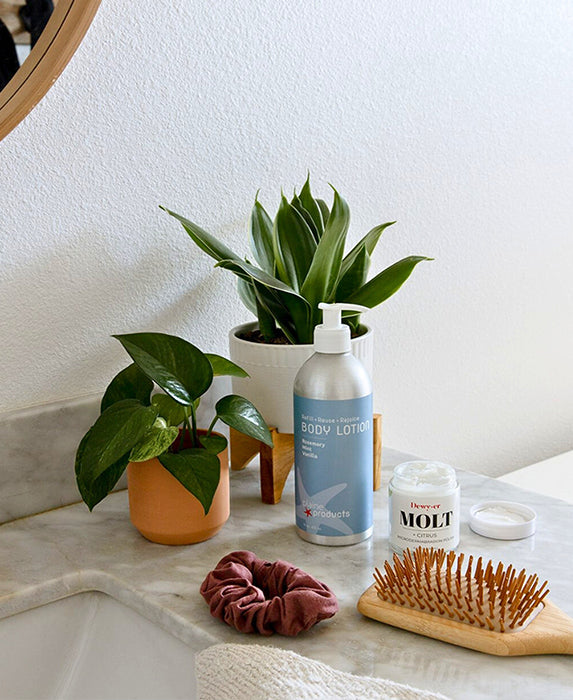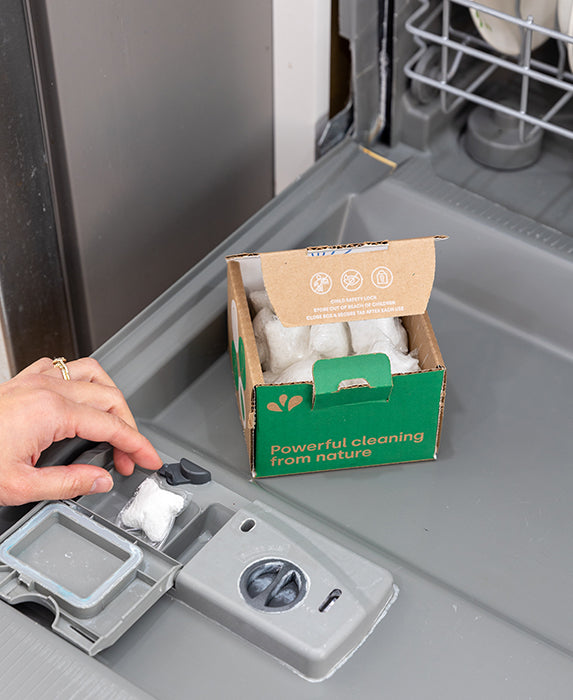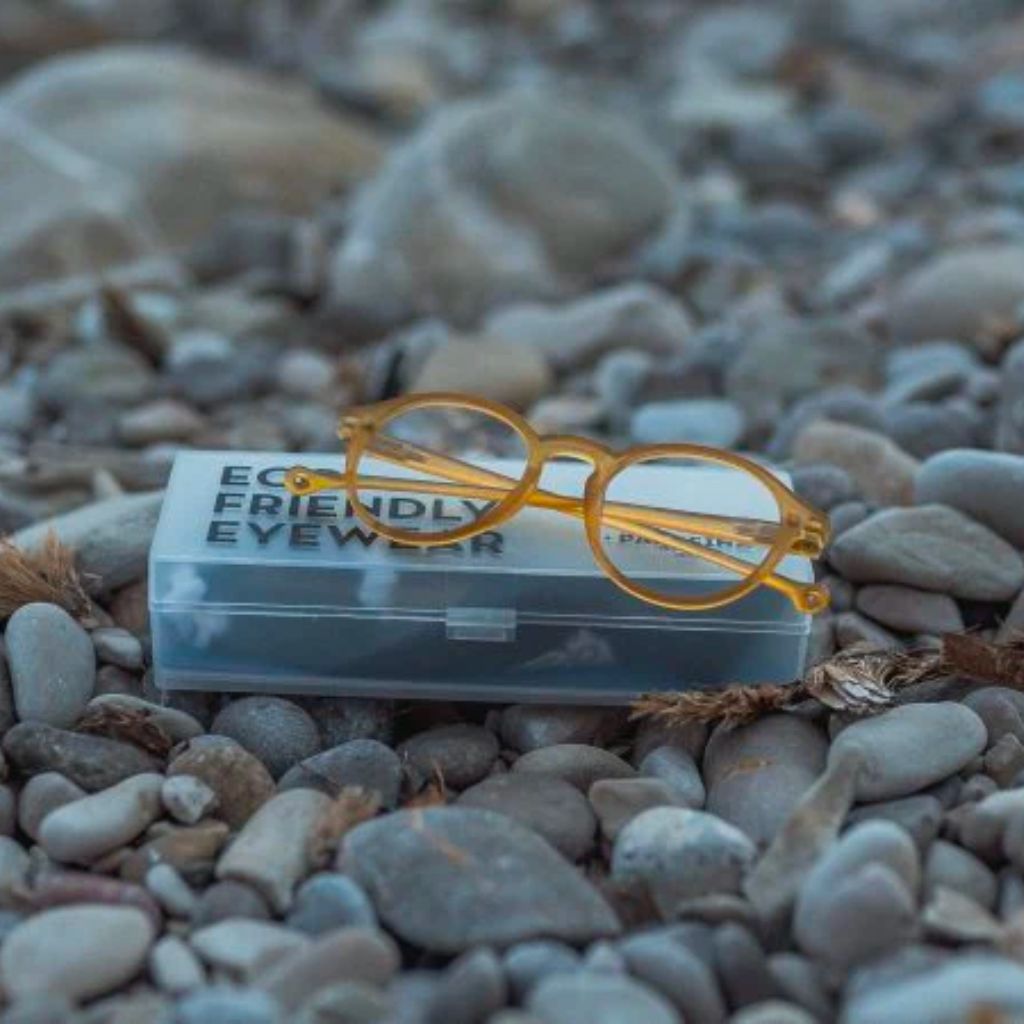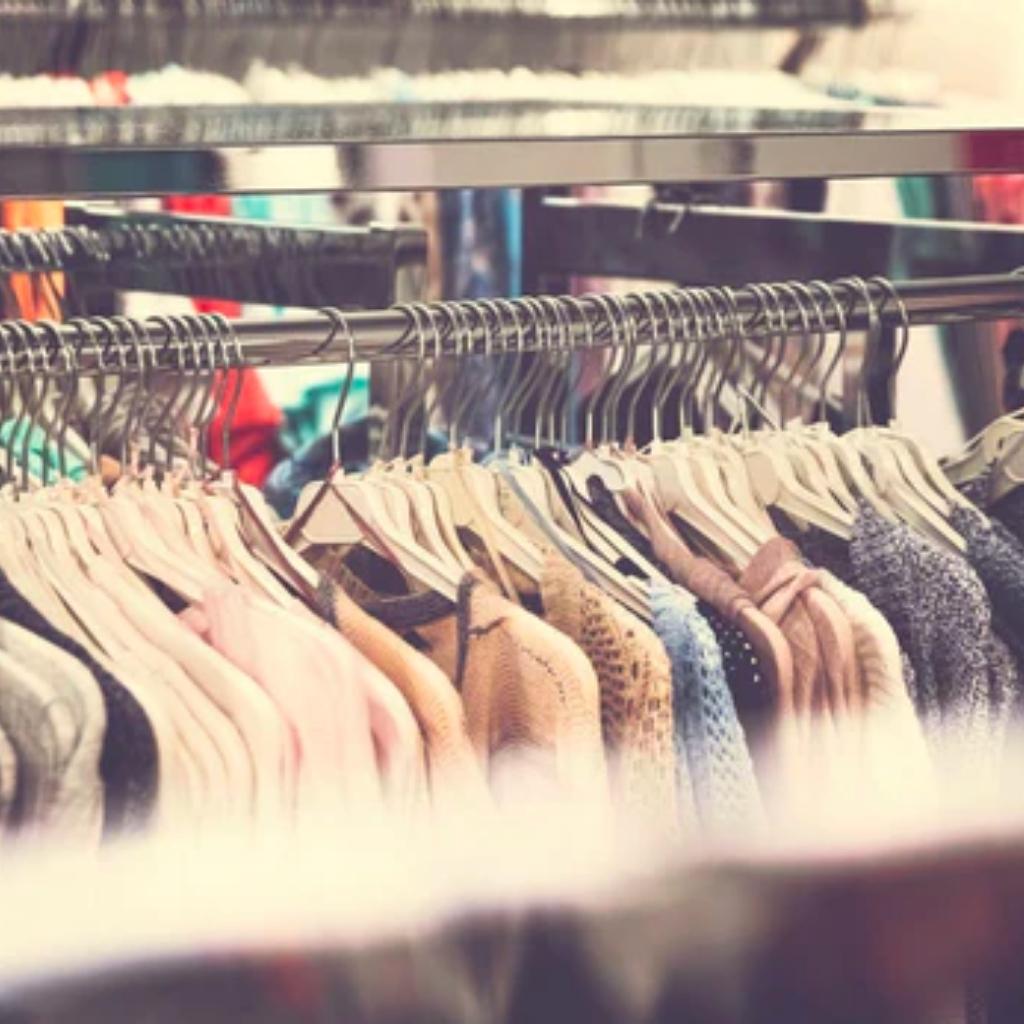If you’re about to have a new baby in your life, you’re probably already thinking about everything you need to buy in order to bea prepared before they arrive. And for many, that includes disposable diapers – purchased in giant, expensive packs from the store and used just once before they head to the landfill. But what if there was a better way? There is with cloth diapering! Cloth diapering, when done properly, will save you money, create less irritation and diaper rash, and reduce the amount of waste we’re sending to the landfill.
There’s a myth that cloth diapers are too complicated – but we’re here to tell you that the cloth diaper game has changed – and it’s simpler (and more sustainable) than ever! Check out the upsides for going the reusable diaper route, plus our cloth diaper tips for using, cleaning, and disposing of your diaper once your baby’s grown out of them.
What You’ll Learn:
- Why cloth diapering is sustainable
- How to wash and care for cloth diapers
- What to do with your reusable diapers once your child grows out of them
- Our favorite reusable diapering options
Cloth Diapering Basics
Why try cloth diapering?
For the planet!
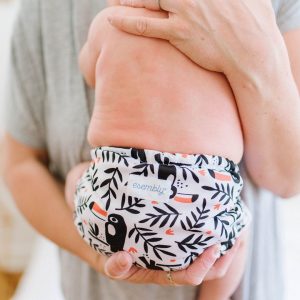 There are so, so many reasons to try cloth diapering…but we think the most important one is that it’s way better for our planet! This is due in part to how wasteful conventional single-use diapers are, as Americans throw away about 37 billion disposable diapers a year (yikes!). Typically, a child will use around 7,000 disposable diapers before they’re potty trained – and those diapers will take up to 500 years to decompose in a landfill. In short: your child’s diaper might still be around when their great grandchild is born (double yikes!).
There are so, so many reasons to try cloth diapering…but we think the most important one is that it’s way better for our planet! This is due in part to how wasteful conventional single-use diapers are, as Americans throw away about 37 billion disposable diapers a year (yikes!). Typically, a child will use around 7,000 disposable diapers before they’re potty trained – and those diapers will take up to 500 years to decompose in a landfill. In short: your child’s diaper might still be around when their great grandchild is born (double yikes!).
Compared to those 7,000 disposable diapers, a baby using reusable cloth diapers only needs 20 to 40 diapers total. Cloth diapers can be washed and reused hundreds of times for many years – meaning they don’t go straight to the landfill like their disposable counterparts. Overall, studies suggest that cloth diapers are 40% less harmful to the environment than disposable diapers – making your little one an eco-warrior before they can even walk!
For less diaper irritation!

You definitely want your baby to be using and wearing the healthiest products, which is another reason to try cloth diapers! Disposable diapers can contain chemicals, dyes, and gels that can cause irritation on sensitive baby skin. Plus, wearing them is basically like wearing paper underwear, which doesn’t sound comfortable for anybody (no thank you!).
The skin is our largest organ and baby’s skin is soft and delicate and ten times more sensitive than our adult skin! Because of this, your little one is more prone to things like eczema, diaper rashes, and other skin irritants or allergies. Babies are also more sensitive to heat, moisture, chemicals, and synthetics, which often are byproducts of disposable diapers. The right cloth diapers will give you peace of mind knowing that your baby is comfortable because they’re made of super-soft natural fibers, like organic cotton, and contain no added chemicals or toxins. Cotton is one of the softest and least allergenic materials and it’s even better when it’s sourced organic and pesticide-free. Step aside scratchy diapers and say hello to silky soft inners designed for your baby’s bottom!
For your wallet!
 As if you needed another reason, we love cloth diapers because they’re a whole lot easier on our wallets. Shall we do some math to see how?
As if you needed another reason, we love cloth diapers because they’re a whole lot easier on our wallets. Shall we do some math to see how?
It’s estimated that a baby will use about 6,000 diapers in the first two years of their life. Disposable diapers cost an average of $.24 per diaper. Assuming a family uses around 60 diapers a week, disposable diapers cost $62.50 a month, $750 a year, and around $1,500 over the estimated two years it takes to potty train. That’s a whole lotta cash on disposable diapers that go straight to our landfills – and it can get even higher with certain brands of diapers! Not to mention the cost of driving to the store, or having them shipped to your door each week. These numbers also vary depending on your baby’s age and how often their diaper needs to be changed – we believe every baby is unique and not just a statistic!
In comparison, buying cloth diapers is an upfront (smart) investment that in the long run will save you some money. Our simple-to-use, sustainable esembly reusable diapers cost $32.50 total for the inner and outer layers. If you need roughly 30 diapers (roughly 20-40 diapers is the average a family uses), and we estimate an average cost of $32.50 per diaper, that’s $975 for 30 diapers that will last you years – and can even be donated when you’re done with them to help families in need. At the end of the day, this means no changes in diaper costs in your budget – not to mention the diapers can also be used if siblings come along! That’s a win for your wallet, AND the planet.
How many cloth diapers do I need for one baby?
Depending on your baby’s age and how often you want the wash the diapers, the amount of diapers you need will vary. Newborns will need around 25-40 diapers for 2-3 days. Older babies will need fewer: roughly 15-25. It’s recccomended to change cloth diapers every 2-3 hours or so, but there are instances when that time range will change: for example, if your baby has gone #2, or is asleep.
How do I change a cloth diaper?

Changing a cloth diaper is very similar to changing a disposable one – although there are some differences between types of cloth diapers! You’ll need a flat changing area, baby wipes or cleaning wipes, and a clean (cloth) diaper. The only difference is that instead of a trash can, you’ll need a bag or dry pail to store the diaper in until you wash it. Read on to learn more about washing and laundering cloth diapers!
1. Lay baby down and remove the dirty diaper, and place in pail (we recommend a strong, eco-friendly diaper pail bag, like this waterproof and recycled polyester one from esembly). Flush solids down the toilet and put the soiled diaper in the pail or wet bag. You can also rinse the diaper before placing it in the pail or bag – this will help avoid stains and allow for the diaper to wash more easily.
2. Clean your baby with wipes – bonus points if they’re made from natural fibers with no chemical additives. We recommend trying reusable wipes soaked in a non-toxic cleanser – this way you’re using the wipes over and over again, rather than throwing wipes in the trash!
3. Slightly lift baby’s legs and bum off the changing area. Around two fingers below the belly button is where baby’s hips are. This is where you want to place the top of the inner diaper used for absorption and fasten it.
4. Repeat the same step with the outer diaper, used for ultimate protection against the dread blow-outs. If the you see any of the inner cotton layer peeking out, tuck it in – this will help to make sure the waterproof outer layer is doing its job!
How can I travel with cloth diapers?
Traveling with a baby may seem daunting, no matter how long you’re going away for. You have to remember things like the stroller, car seat, bottles, bibs, blankets, the list goes on! And of course, diapers are included. You may be tempted to grab some disposable diapers for traveling because they seem more convenient, but it’s not like you can bring a whole box with you – especially if you’re flying. Plus, chances are if you use disposable diapers, you’ll end up having to restock during your trip – and let’s be honest, nobody wants to make extra trips to buy diapers!
The simpler solution? Cloth diapers! The reality is, they’re much easier – you can easily pack extra in your luggage, and on top of that, you’ll never run out! Just wash them in the sink, and relax while traveling – knowing that you’ll never find yourself out of diapers.
Laundry with Reusable Diapers
How do I clean cloth diapers?
 1. Just like with your baby’s new clothes, you’ll want to wash cloth diapers before using them for the first time. For example, esembly washes their inner diapers before shipment so that they’re ready to go – but even in this case, it’s always good to wash them before the first use to remove any grime from shipment.
1. Just like with your baby’s new clothes, you’ll want to wash cloth diapers before using them for the first time. For example, esembly washes their inner diapers before shipment so that they’re ready to go – but even in this case, it’s always good to wash them before the first use to remove any grime from shipment.
2. When preparing for first time use, wash hot with detergent and tumble dry. They will continue to gain absorbency with more washes! After this, cloth diapers should be washed every 2-3 days (depending on what type of diaper you get), and we suggest you always read the care instructions on your specific diaper – but we’ll talk about how we clean our esembly cloth diapers!
3. Good news about your outer diaper: it doesn’t necessarily need to be thrown in the diaper pail every time you use it! If you start to change your baby and you notice that nothing’s on it, you can go ahead and swap out that inner cloth diaper – then you’re ready to reuse the outer diaper. If you notice it’s only a little damp, just wipe it down, set it aside to air dry, and use it the next time around. Easy peasy! If it’s a no-doubt dirty diaper, it’s time to put that outer diaper in your diaper pail.
When you wash your reusable diapers, make sure they’re washed separately from other clothing – and only after you’ve removed as much solid matter as possible from the diaper. Start by taking your diaper pail bag (no soaking required) over to the washer, pushing the bag inside out over the washer to release the dirty diapers, then throwing in the bag with the other items.
4. Begin the washing process by putting your diapers through the shortest wash cycle your washer allows on warm heat – this is an important step that will remove the outer layer of the diaper soil. And when using a detergent, make sure to stay away from fabric softener, additives, and fragrances!
5. Next, keep the contents in the washer, and using hot water, run the longest, heaviest cycle possible – this is where your diapers and diaper accessories will get squeaky clean!
6. Move everything over to the dryer on a medium high temperature, shaking your inner diapers open as you make the transfer to cut down on dry time. Alternatively, you can line dry all your diaper materials in the sun!
Here’s an easy way to remember how to wash cloth diapers:
S — Simple wash routine
U — Use enough detergent
D — Double wash
S — Stay away from additives in the laundry
What detergents are right for cloth diapers?
There are a lot of different detergents out there, so how do you know which one is best for cloth diapers? No matter when brand you choose, make sure it’s non-toxic – and contains no chemical additives, parabens, sulfates, or phthalates which can irritate sensitive skin and damage diaper materials. Washing diapers with a high quality cleaning detergent is essential for the cloth diapering process – if not, you may feel discouraged with the entire process, especially if your diapers are smelling or staying yucky after washes. We recommend checking out the laundry items on EarthHero, to find deep-cleaning, non-toxic detergents that help the planet.
Yeah, what about potty training with cloth diapers?
 Potty training is a process for both you and your child. You can choose to stick with whatever reusable diaper you already have at home – just put it on a bit looser, so your child can pull it up and down. Some parents also choose reusable cloth diapers that are made especially for potty training with a pull up design. With potty training, it’s important for your little one to recognize the feeling of being wet, so that they can connect the feeling of a full bladder with wetness. This will lead to them being uncomfortable – and when they’re learning to use the toilet, they’ll put it all together and discover that it’s a way more comfortable experience. This means you can choose when or how to start helping your child connect the potty training dots!
Potty training is a process for both you and your child. You can choose to stick with whatever reusable diaper you already have at home – just put it on a bit looser, so your child can pull it up and down. Some parents also choose reusable cloth diapers that are made especially for potty training with a pull up design. With potty training, it’s important for your little one to recognize the feeling of being wet, so that they can connect the feeling of a full bladder with wetness. This will lead to them being uncomfortable – and when they’re learning to use the toilet, they’ll put it all together and discover that it’s a way more comfortable experience. This means you can choose when or how to start helping your child connect the potty training dots!
And what do I do with my reusable diapers when my baby doesn’t need them?
The great thing about cloth diapers? They’re the gift that keeps on giving! If you’re planning on having another child down the road, that means your set in the diaper department (how great is that?) – so save your cloth diapering items for then! If not, we recommend you donate them. There are lots of organizations out there dedicated to getting items like reusable diapers to parents who need them – and especially if you cleaned them well, your cloth diapers will be so appreciated, and will stay out of landfills!
Cloth diapering is easy (we promise)!
 Cloth diapering has a reputation (in our opinion, an outdated one) for causing a whole lot of headaches for household chores and diapering on-the-go. The exciting news? Brands like esembly are changing what it means to go for reusable diapers – not just for the health of the planet and your baby, but for your day-to-day life!
Cloth diapering has a reputation (in our opinion, an outdated one) for causing a whole lot of headaches for household chores and diapering on-the-go. The exciting news? Brands like esembly are changing what it means to go for reusable diapers – not just for the health of the planet and your baby, but for your day-to-day life!
What’s esembly’s story?
esembly is a women-owned business dedicated to reimagining the way we think about diapering – from the way diapers are manufactured, to the materials we use, to the simplicity of using diapers made with both your baby and the earth in mind. The people behind esembly have tons of experience with running diaper washing services in NYC – so they really know their stuff when it comes to what makes the easiest-to-use diapers, and how best to clean them (see our cleaning tips above!).
How do esembly’s diapers work?
esembly’s diapers are constructed with two layers: an inner layer, made of soft-to-the-touch, GOTS certified, 100% organic cotton for absorption, and an outer layer, crafted from 100% recycled polyester derived from post consumer plastic bottles.
And like we said, they’re all about simplicity at esembly. Their diapers come in two sizes that will grow with your baby, from 7 pounds all the way up to 35 pounds. They’re also easily adjustable to fit the contours of your baby’s body – so those less-than-fun blowouts are a little easier!
They also offer great accessories to up your reusable diaper game: their 100% recycled polyester diaper bag means that laundry day doesn’t have to be every day. Their reusable wipes are strong and reliable. On top of that, they offer an overnighter booster, for an extra layer of protection using fleece when your baby gets some extra shut eye.
Okay, okay: we’ve thrown a LOT of information at you! Feel like an expert in cloth diapering? Us neither. There is SO much to learn about cloth diapering, and this is just some of the amazing information available out there. Start slowly, find what works for you, and stick with it! From saving you money, to reducing landfill waste, to less diaper rash and irritation, there is a million and one reasons to cloth diaper your baby. There are no wrong answers when it comes to cloth diapering – all that matters is that you’re taking steps in there right direction away from wasteful conventional diapers. Have you tried cloth diapering, and if so, how did it go? Leave us a comment below!

